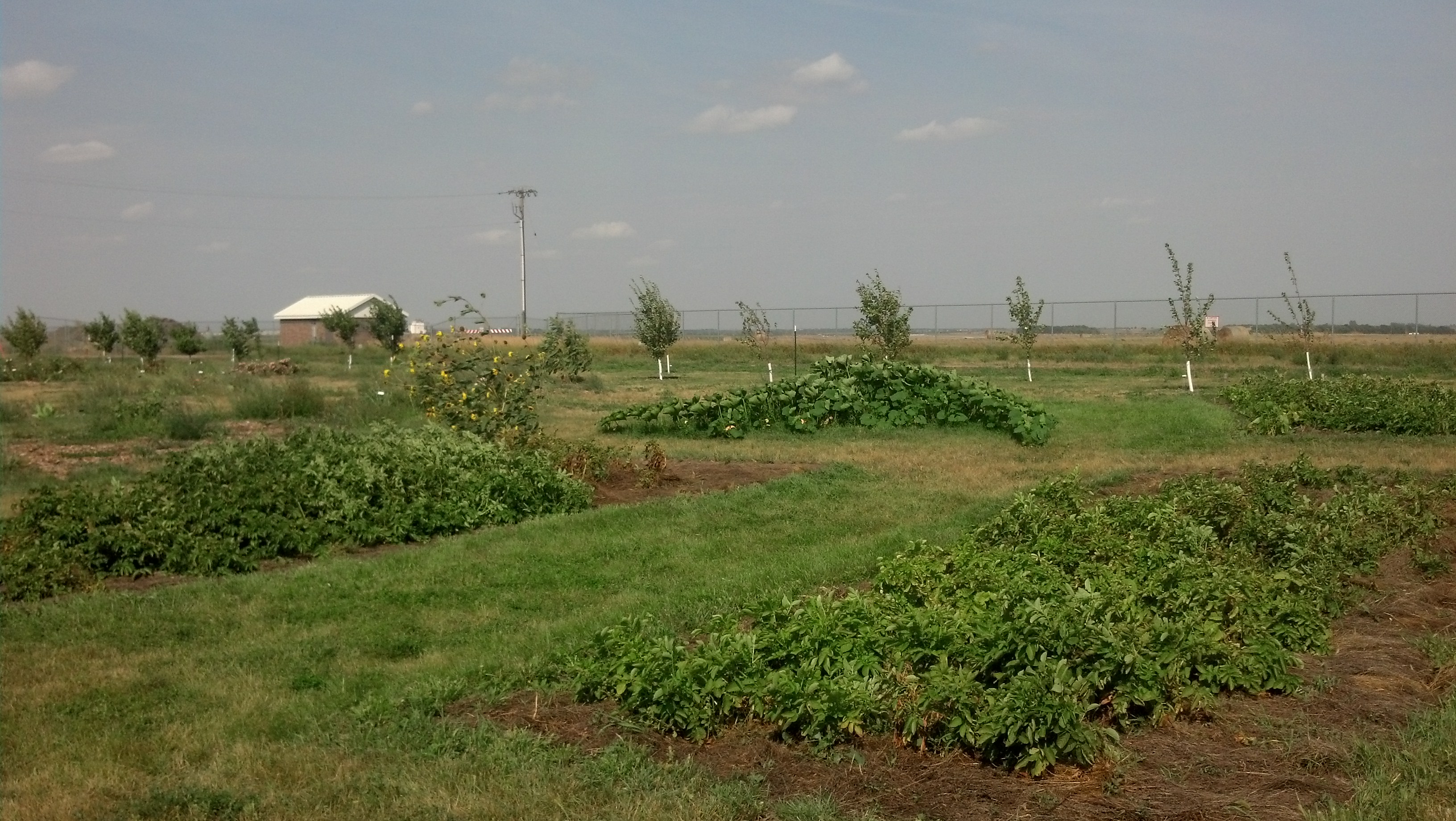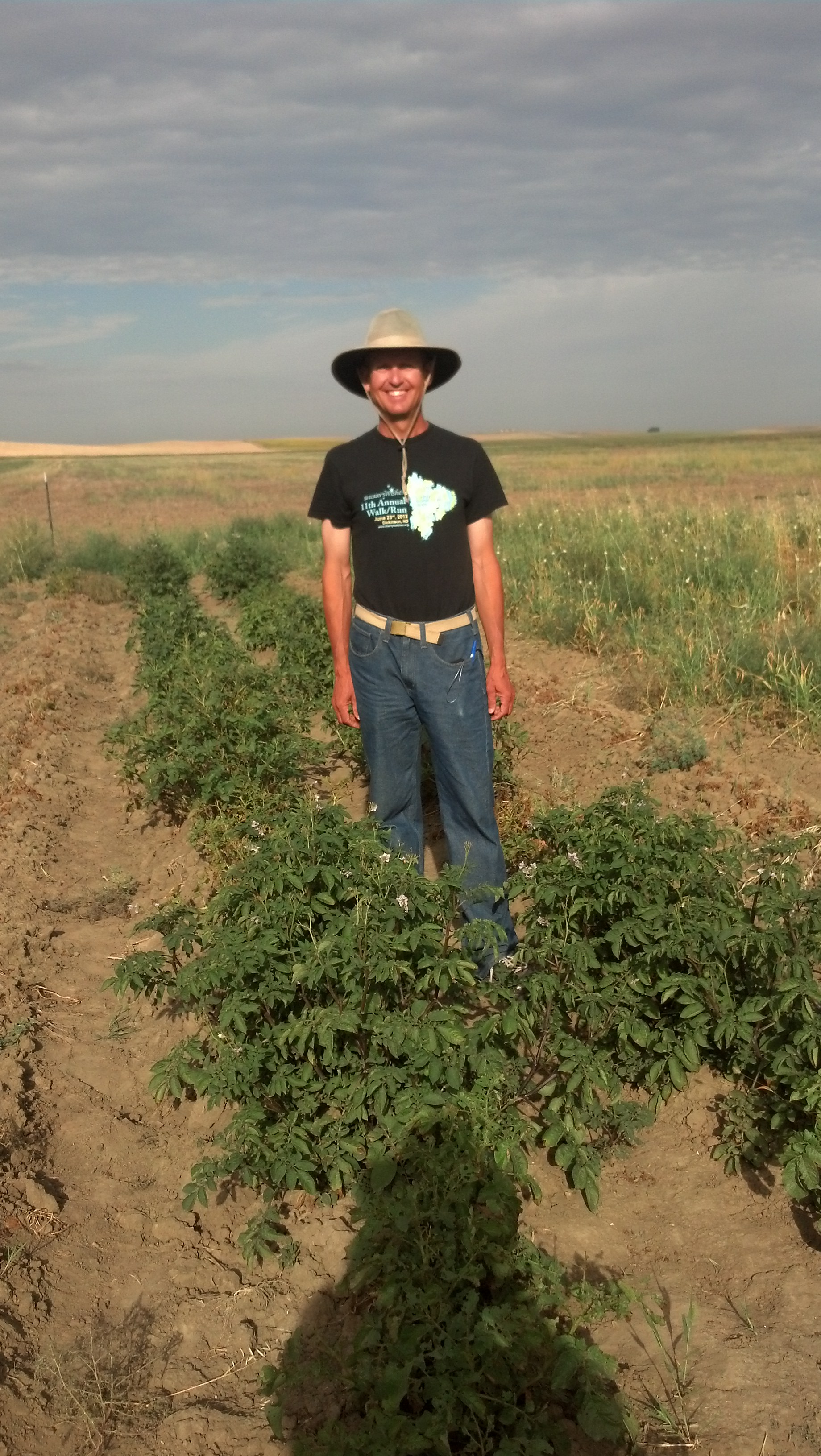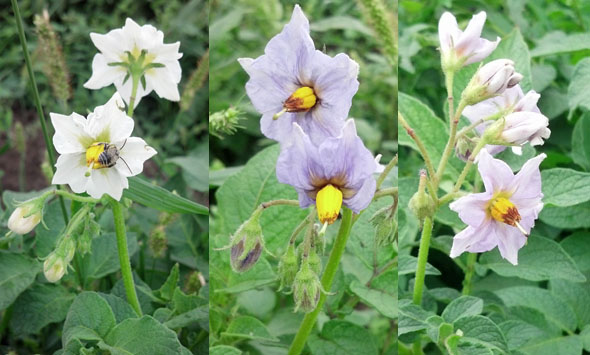Summer 2013 field tours – Minnesota and North Dakota Part Two
I had a wonderful week traveling across North Dakota, Minnesota and Wisconsin. My drive from the western border of North Dakota back to Madison in three days brought home the climatic and geographic changes that occur through those three states. Visiting eight of our potato variety trial sites in ND, MN and northwest WI gave me some new insights into the important of multi-site variety trialing and the adaptability of some of the varieties in the trial. I look forward to continuing these trials in future years – there is a lot to learn from these varied environments.

Last Friday, I was the guest of Colette Wolf, Agroecology Extension Educator, at United Tribes Technical College in Bismarck, ND. The campus houses not only the technical college, but also student housing, a grade school for children of UTTC students, community gardens, and an ever increasing number of small gardens containing edible native plants and traditional medicinal plants. Colette, with the help of her students and colleagues, planted the potato plots in the Dragonfly Garden, a beautiful site that includes ornamental gardens, vegetable plots, and a newly planted orchard of fruit and nut trees. Budget cuts due to sequestration delayed many garden projects, so it has been a difficult year in the Dragonfly Garden. Despite these difficulties, Colette has plans to continue expanding the garden into an active and productive research farm. Colette and her team have put considerable effort into the potato variety plots, and they looked beautiful when I visited. This site has been managed as a garden plot, with brome grass mulch doing a great job of weed suppression. A small group of students, staff and faculty gathered in the garden to talk about potato cultivation and variety selection. We noted some big differences between varieties, with Australian Crawlers doing its best to take over the plots beside it. Red La Soda and Langlade had also produced vigorous vines. During my visit I was also glad to meet Tom Kalb, the State Extension Horticulturist for western ND. Tom coordinates a large vegetable trialing program which has had more than 500 ND participants.

On Monday I visited the two west-most sites in the trial: Frank Kutka’s land near Belfield, ND, and Dwight and Patsy Duke’s farm, Skyline Ranch, in Hensler, ND. Frank and Dwight are both members of the Northern Plains Sustainable Agriculture Society, which has some great resources on its website. Both Frank and Dwight participate actively in the NPSAS Farm Breeding Club, and Frank has put together a really useful video guide to performing a variety screen. Frank has a dryland site under cultivation, and this is his first year on this particular piece of land. He has quite a variety of experimental plots, including an onion crossing block, and is passionate about breeding and selecting vegetable varieties that are resilient to the challenging conditions of an arid North Dakota. He uses the term “stress test” in reference to his location – and it certainly is that! The potato varieties in his screen showed distinct differences, and it was exciting to see varieties that have thrived on a clay soil that received only 11 inches of rainfall this spring and summer, most in May and June. The most striking for both vigor and resistance to pests and insects was Blue Tom Cat, followed by Australian Crawlers and Papa Cacho.

When I arrived, Dwight and Patsy Duke were busy washing and loading vegetables for market, including some good-looking Red Norland potatoes. They have a presence at six local farmer’s markets, so there’s not a lot of downtime! Dwight showed me his potato experimental plots, which included our variety trial plots. This field is irrigated, so the varieties were more vigorous than at Frank’s site. Of the varieties Dwight is growing, Houma, Candy Stripe and Black Russian were standouts for vigor. Dwight is also growing potatoes from true potato seed (TPS) generated from his crosses. His major breeding goal is to select for resistance to the tuber- and aphid-borne pathogen, Potato Virus Y.
Tuesday found me back in Minnesota at Larry Heitkamp’s farm, Yellow Rose Organic, close to Sebeka. Larry, another NPSAS member, calls himself the farm’s caretaker, and our conversation made it clear that he is a thoughtful and careful manager of his land and crops. We talked about his fertilizer trials, weed management, finding sources of seed potatoes, and the challenges of getting good size on russet potatoes in a short season environment. Larry planted fairly early, so most varieties were dying down or entirely dead. The remaining vines gave me some clues to vigor, and Purple Valley, Candy Stripe, French Fingerling and Corne de Mouton had evidently grown well.
After visiting these diverse sites, I am even more excited about the harvest data that participants will be gathering – total tuber yield, marketable (or usable) tuber yield, and (of course!) taste. Some of the participants in this variety trial have already started gathering this data – more on that later! If you’re a trial participant, please feel free to contact me if you have any questions about collecting data at harvest. Here’s hoping you’ll find abundant tasty potatoes under the vines.
Ruth
This article was posted in Blog Posts.
